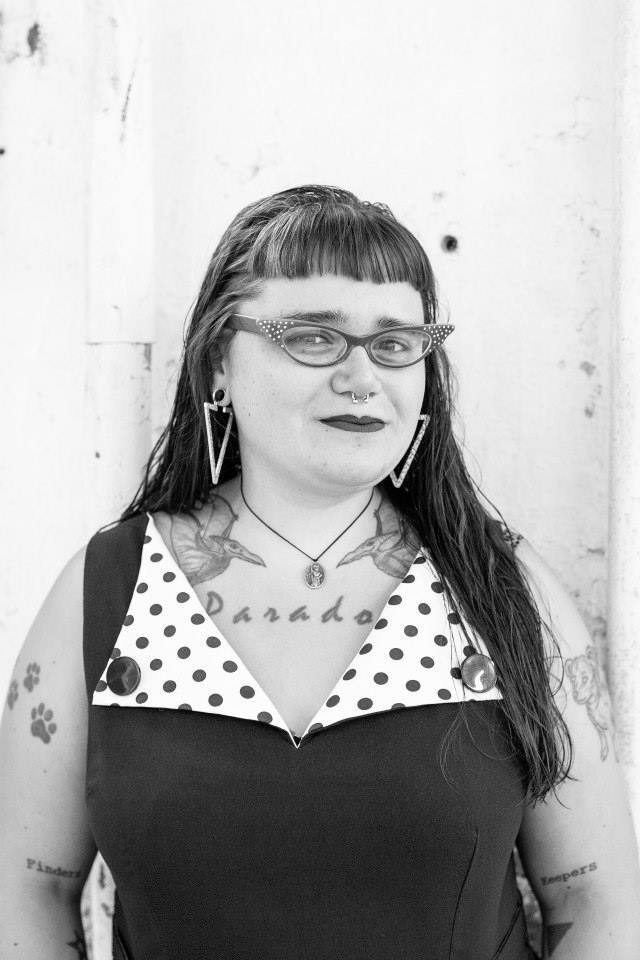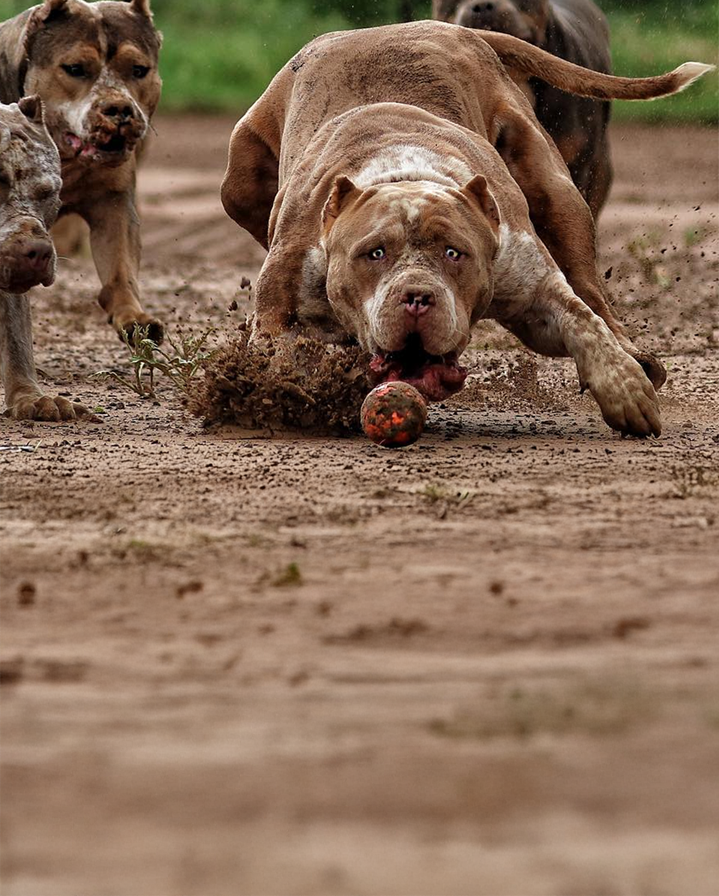How to Train a French Bulldog [Dog Trainer Explains]
If you have a French Bulldog, you aren’t alone! This fun-loving breed has been the most popular dog and is actually the most popular breed in the United States! The American Kennel Club describes the breed as playful, smart, and affectionate which explains why these dogs are such popular companions. Although French Bulldogs make great pets, like any breed of dog they need training.
To help build a great relationship with your dog it’s important to start training your French Bulldog as soon as they come home. French Bulldogs, like all other breeds of dogs, benefit from basic obedience and crate training. These foundation skills help you to form a stronger relationship with your dog and can help with preventing and overcoming common behavior issues and training challenges.
Key Takeaways
- Training any dog should be a fun experience for the dog.
- French Bulldogs should always be trained using positive reinforcement techniques and approaches.
- Dogs learn best from regular and short training sessions. These regular training sessions are the most effective way to teach French Bulldog new skills.
- Proper nutrition plays a vital role in training success.
Getting Started with Your French Bulldog Training
Animal care and welfare experts including the American Veterinary Medical Association are in agreement that aversive training approaches shouldn’t be utilized with training dogs. It’s also important to only utilize positive reinforcement training techniques. This means we want to use reinforcements like treats, praise, and toys when working with our French Bulldogs.
Behaviors that are reinforced are more likely to be repeated. By rewarding your dog as you train, they are more likely to repeat the desired behavior. French Bulldogs have big playful personalities. This is an asset as we want our dogs to be enthusiastic learners and engaged in training.
Essential Supplies for Training French Bulldog

The essential supplies you’ll need for training your French Bulldog are:
- 6-foot lightweight training leash
- Long-line training leash for practicing recalls in unfenced areas.
- Properly fitted harness.
- Clicker if you’re going to be clicker training.
- Toys your dog likes that you can use to tug or toss as a reward.
- Appropriately sized crate that has enough space for your dog to comfortably sit, lay, stand, and turn around.
- Treats your dog likes such as Bully Max training treats to encourage your dog to be excited to train.
Understanding Your French Bulldog’s Personality
The French Bulldog club of America describes French Bulldogs as "well behaved, adaptable, and comfortable companions with an affectionate nature and even disposition". French Bulldogs are also known to be playful, alert, and active little dogs. French Bulldogs are bred as companion animals, and will form close relationships to people if properly socialized. This close bond is ideal for training because your French Bulldog will naturally want to work with you.
We want to always keep training fun and playful for our dogs which keeps them engaged and interested in training. Although French Bulldogs naturally have a lovely disposition, they can have a reputation of being stubborn. If you find yourself struggling with stubbornness during training time, it’s an indicator that the environment is too distracting, and/or your rewards aren’t high enough value. In this case, try to decrease the distractions by training in a quieter location and slowly working up to training around distractions. You can also increase the value of rewards you are using by switching to a different treat or toy that your dog likes more.
Basic Training Commands
Consistency is key when it comes to teaching basic skills and cues to your dog. It’s most effective to have multiple short training sessions instead of long training sessions when teaching new skills to your dog.
Short training sessions prevent dogs from getting bored, stressed, or overwhelmed when training. Never train your dog when you are angry or frustrated. We want training to be fun and enjoyable for our dogs which requires us to be in a positive headspace.
Teaching Sit:
The easiest way to teach your French Bulldog the “sit” cue is to use a training method known as luring.
- Take a treat your dog is excited about. Get your dog’s attention with the treat and put it close to your dog’s nose.
- Pull the treat gently up and slightly back over their back. Your dog’s nose will follow the treat, and as their head goes up, their bottom will go down into a sit.
- When your dog’s bottom touches the ground click (if you are clicker training) or use a verbal marker like “yes” and treat your dog.
- After a few repetitions add a verbal cue like “sit” right as your dog begins to sit.
After a few practice sessions you can fade out the treat lure and just reward your dog after they sit.
Teaching Stay
When teaching your dog to stay it’s important to build duration slowly over time.
- Start by cueing your dog to sit.
- When your dog is in position, praise and treat your dog.
- When your dog is sitting hold your hand out like a stop sign and say “stay” or “wait.”
- Then, wait a second, praise and treat your dog before they move out of position.
As you practice “stay” slowly build the duration of time you are asking your dog to stay in position. You can also start to move away from your dog as they hold the stay. Go slowly with adding time and distance to keep your French Bulldog successful while learning.
If your dog gets up just lure them back, ask them to sit/stay again and then after a shorter period of time than the last session praise and treat your dog.
Teaching Come
Start recall training your dog in a quiet area of your home where there aren’t distractions.
- When you are near your dog and say the word "come," "here," or whatever verbal cue you would like to use and give your dog a treat. This will help your dog to understand that the verbal cue will be rewarded.
- As you practice, move a couple of steps away from your dog, then use your verbal cue again and praise your dog as they move towards you and treat your dog when they get to you.
- The more you practice you can start to increase the distance you are from your dog.
The better your dog gets at recalling; you can start to practice with more distractions like when your dog is on a long-line leash outside. Come is a hard skill for dogs because they have to leave something interesting to come to you. Be sure to always use treats to reward your dog for coming.
Crate Training Your French Bulldog
Crate training is an important skill for every dog, including French Bulldogs to have. It gives dogs a safe place to be when they can’t be supervised. Crate training can also help keep dogs safe when in the car in the event the driver needs to stop suddenly, or there was an accident.
Keeping your French Bulldog in a crate when you are away from home can prevent them from chewing or eating something that could be harmful to them. In addition, teaching your dog to be comfortable in a crate can help prevent anxiety when dogs are home alone, and help them be less stressed if they ever need to stay at a vet clinic or boarding facility.
Start teaching your dog to be comfortable in their crate as soon as they come home. We want our French Bulldogs to have positive associations with being in their crates.
How to Crate Train your French Bulldog?
An easy way to crate train your Frenchie is to start feeding their meals inside their crate. By doing this you are pairing food (something positive to your dog) with the crate so your dog will associate being in the crate with meals.
Additional Tips on Crate Training:
- Leave your dog’s crate open so they can choose to spend time in their crate.
- When you want to leave your dog in their crate at bedtime or when leaving the house give your dog a KONG or similar sturdy hollow toy stuffed with (dog safe) peanut butter or other soft and spreadable treat. This will help occupy your dog while in the crate and create a positive association with being crated.
- When first crate training your dog, keep them in the crate for just a few minutes at first. Then, you can slowly build up your dog’s time in their crate as your dog gets comfortable.
Advanced Training Techniques and Problem Solving
French Bulldogs are closely bonded with their families, and easy to train, but they are still dogs. Below are tips for more advanced training and working through common behaviors.
Potty Training Strategies
Potty training is an essential skill for every dog to learn. Some French Bulldogs struggle with potty training especially if they live in an area with very hot or very cold weather. Even though it can be frustrating if your dog has accidents when potty training, we don't ever want to scold or punish your dog. This is because punishing your dog will only confuse them, and harm your relationship.
To help your dog be successful with potty training it’s best to closely supervise your puppy. If your puppy begins sniffing an area inside that’s an indication that your puppy might need to go potty so should be taken outside. Pay attention to your puppy’s patterns for when they tend to go to the bathroom. To help your puppy be successful it’s a good idea to offer the opportunity to go outside and potty when there is a change in activity. For example, when your dog wakes up from a nap, after eating, or after playing.
When your dog potties outside in the appropriate area praise and treat your dog. If accidents happen don’t worry that this is any kind of significant setback. Instead, take it as a reminder that your puppy needs more supervision so that you can redirect them outside if they start sniffing. If you’re not able to supervise your French Bulldog, it’s a good idea to either crate them or put them in a small puppy proofed room like a bathroom. This will help prevent messes and keep your dog from getting into things that could hurt them.
Overcoming Behavioral Challenges
If you have a French Bulldog who is struggling with behavioral challenges like excessive barking, chewing, or jumping, those are signs that your dog can benefit from more training. Just like positive reinforcement training techniques are effective for teaching new skills, it’s also the most effective approach for working through any behavioral issues that might come up with your dog. If your dog is engaging in behavior you don't like, instead of scolding, teach them what you would rather they do. Get your dog's attention with a treat, or toy and then move them to a different activity and engage them in a more appropriate activity.
Socialization and External Environments
French Bulldogs as a breed are naturally good-natured and social dogs. However, it’s still important to properly socialize them as puppies.
Socialization refers to the process of gently and appropriately exposing puppies to new places, people, other animals, and experiences. Socialization is most effective with young puppies. The socialization window is before puppies are before twelve weeks of age. During this important period in a young puppy’s life, puppies are learning about the world around them. The lessons they learn then are likely to impact their temperament for the rest of their lives. While socializing a puppy it’s important to be slow and thoughtful, allowing puppies to explore at a pace they feel comfortable with.
FAQs About Training French Bulldogs
How long does it usually take to train a French Bulldog?
Training is a life-long process for all dogs including French Bulldogs. It’s important to start training puppies with socialization and basic obedience, crate training, and potty training as soon as they come home. French Bulldogs learn quickly and will generally begin understanding these basic skills within a few training sessions. Keeping training sessions short and consistent will help your dog learn more quickly.
What are the best ways to reinforce training lessons?
Behaviors reinforced are most likely to be repeated which is why positive reinforcement training is so effective. Each dog will have a currency, meaning what is most rewarding for them. Some French Bulldogs are most rewarded by play with toys, and others find treats most rewarding. Experiment with different rewards to find what is the highest value to your dog.
How can I train my Frenchie to be calm when home alone?
Dogs are calm when home alone when they are comfortable and confident. Crate training can help keep French Bulldogs safe when home alone and help them to be comfortable and feel secure. Regardless of if your dog is in a crate, or just in a dog-secure room in your home, provide your dog with a treat-filled toy to occupy them while home alone.
Conclusion
French bulldogs are adorable, but like any dog they require significant training. Regular training starting when your Frenchie is a puppy will help your dog grow into a polite and well-trained adult dog.
Short and fun regular training sessions are the best way to teach your dog new skills and reinforce good behavior. By making training a regular part of your routine with your dog not only will your dog learn new skills, but you will also be helping to build a positive relationship with your dog.
Training your dog can be stressful or frustrating but it’s important to be patient. Remember, your dog isn’t trying to frustrate you and if they “misbehave” it’s just a sign that they don’t understand what behavior you want or expect from them. By staying positive and consistent with your training you’ll be able to reduce or eliminate the behaviors you don’t like and teach your Frenchie new skills.
Do you have a French Bulldog at home? What are you trying to teach your dog, or what behaviors are you struggling with?









